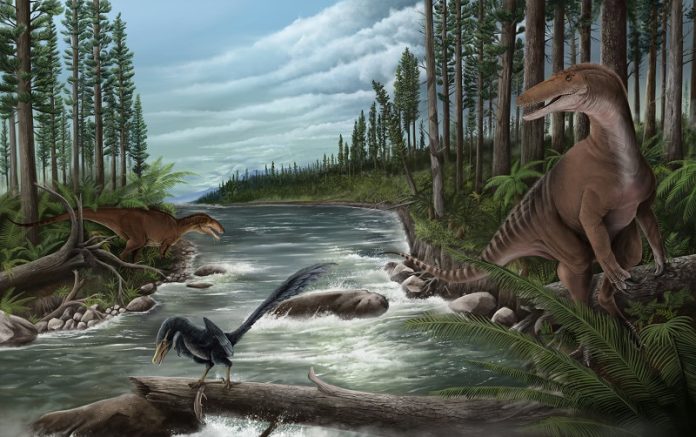
A groundbreaking discovery has been made in Australia—scientists have uncovered the world’s oldest known megaraptorid fossils and the first evidence of carcharodontosaurs in the country.
These findings, published in the Journal of Vertebrate Paleontology, rewrite the history of dinosaur evolution and reveal a predator ecosystem unique to Cretaceous Australia.
The research was led by Museums Victoria Research Institute and Monash University Ph.D. student Jake Kotevski. The team examined five theropod fossils found along Victoria’s coastline in two key locations:
- The upper Strzelecki Group (Bunurong/Boonwurrung Country, Bass Coast) – fossils from around 121 to 118 million years ago
- The Eumeralla Formation (Eastern Marr Country, Otway Coast) – fossils from around 113 to 108 million years ago
These fossils reveal a diverse ecosystem of predatory dinosaurs, dominated by large megaraptorids (6–7 meters long), smaller carcharodontosaurs (2–4 meters long), and agile unenlagiines, also known as “southern raptors”, which were about a meter long.
One of the biggest surprises was the discovery of carcharodontosaurs, a group of giant carnivorous dinosaurs that were previously unknown in Australia.
“In South America, carcharodontosaurs grew to Tyrannosaurus rex-like sizes, reaching up to 13 meters long, towering over megaraptorids,” explains Kotevski. “But in Australia, the roles were reversed—megaraptorids were the dominant predators, while carcharodontosaurs were much smaller.”
This shows that Australia’s dinosaur ecosystems evolved differently from those in South America, despite both continents once being part of Gondwana, the ancient supercontinent.
Two of the fossils belong to the oldest megaraptorids ever found, changing what scientists know about the evolution of this group.
Their discovery suggests that Australia played an important role in the development of theropod dinosaurs across Gondwana, possibly connecting dinosaur species between Australia and South America through Antarctica during the Early Cretaceous.
Dr. Thomas Rich, senior curator of vertebrate paleontology at Museums Victoria, says, “These fossils expand Australia’s dinosaur record and challenge past ideas about predator hierarchies in Gondwana. This discovery shows how unique Victoria’s Cretaceous ecosystem was.”
The study also highlights how museum collections are key to new scientific discoveries. Some of these fossils had been preserved in museum collections for decades, waiting for the right technology and expertise to identify them.
“Specimens stored in museums for years, which were previously unidentifiable, are now giving us new insights into dinosaur evolution,” says Tim Ziegler, vertebrate paleontology collection manager at Museums Victoria.
Another important part of this discovery is the work of volunteers. Melissa Lowery, a Museums Victoria volunteer, identified three of the fossils between 2022 and 2023. Her findings show how community members can play a vital role in paleontology, working alongside professional researchers.
Kotevski and the team will continue exploring fossil-rich sites, especially where the large megaraptorid remains were found. This work is part of the Dinosaur Dreaming project, which has already led to over 10,000 fossil discoveries of dinosaurs, mammals, birds, pterosaurs, and more.
As researchers keep searching, they hope to uncover even more secrets about Australia’s prehistoric past and the unique dinosaurs that once roamed the land.



